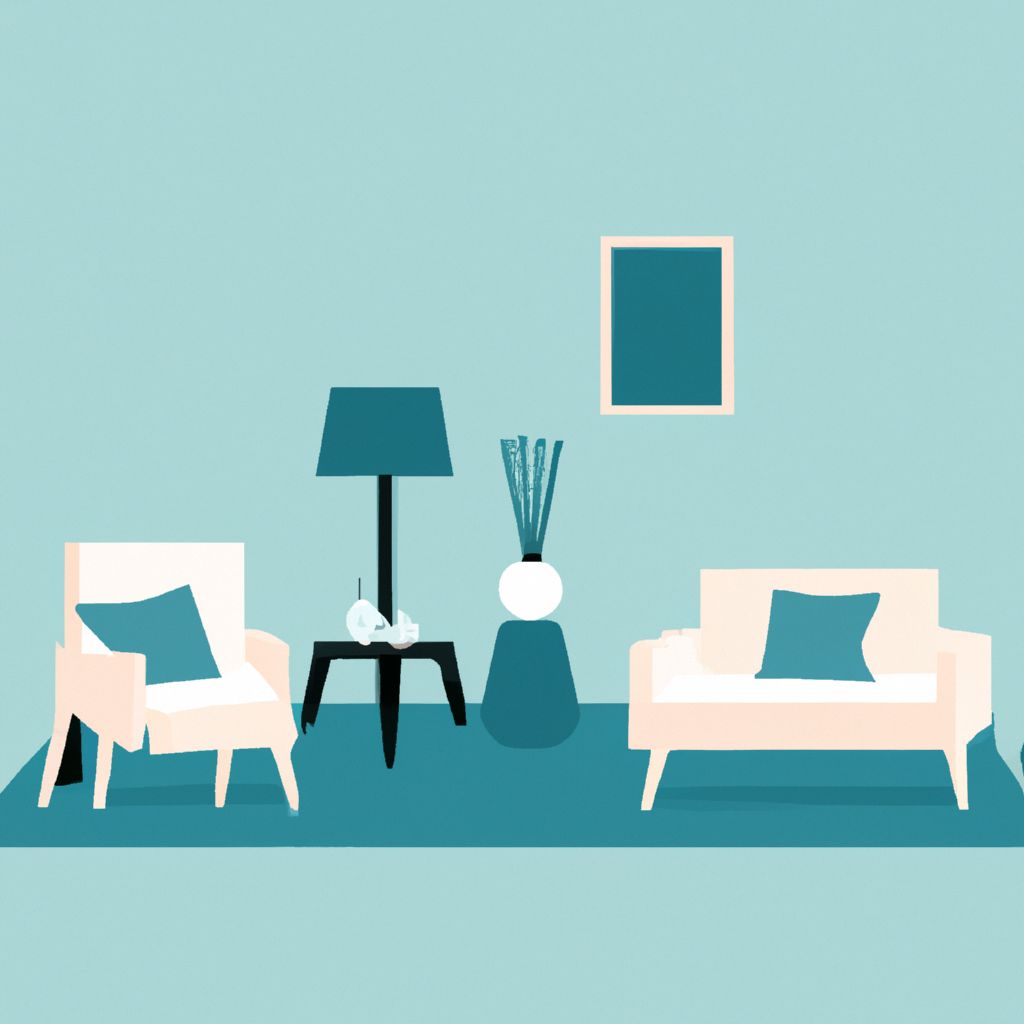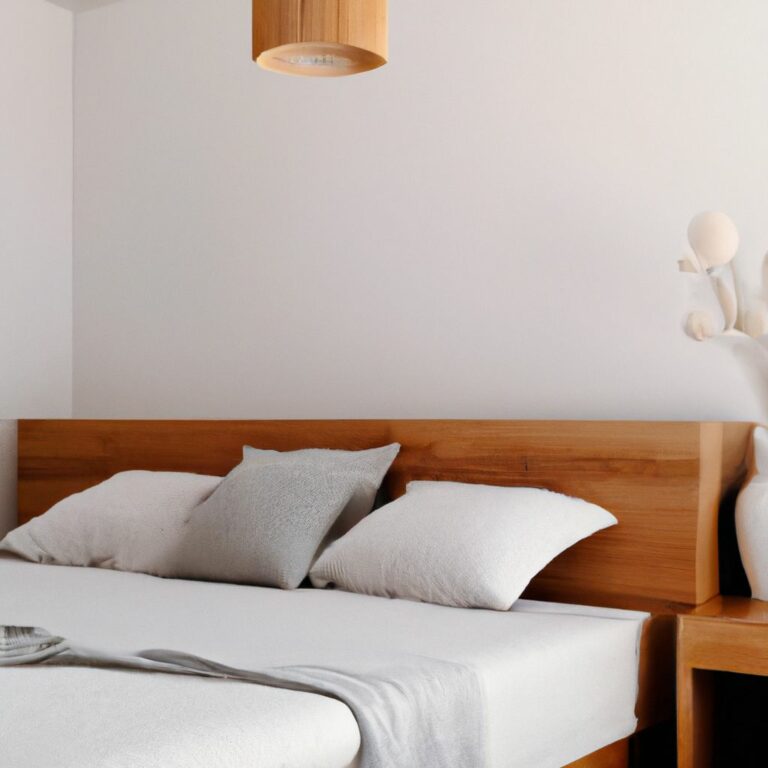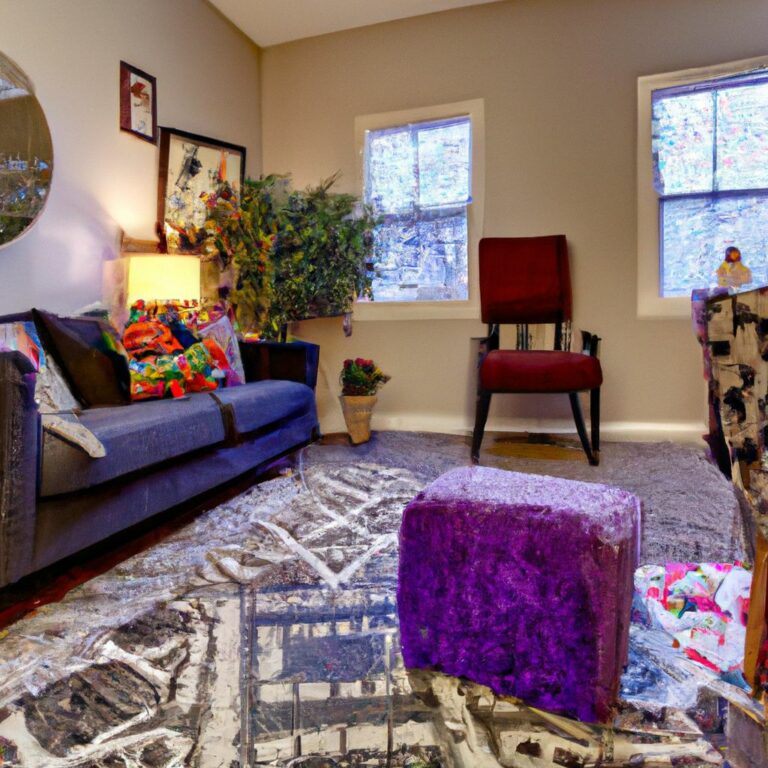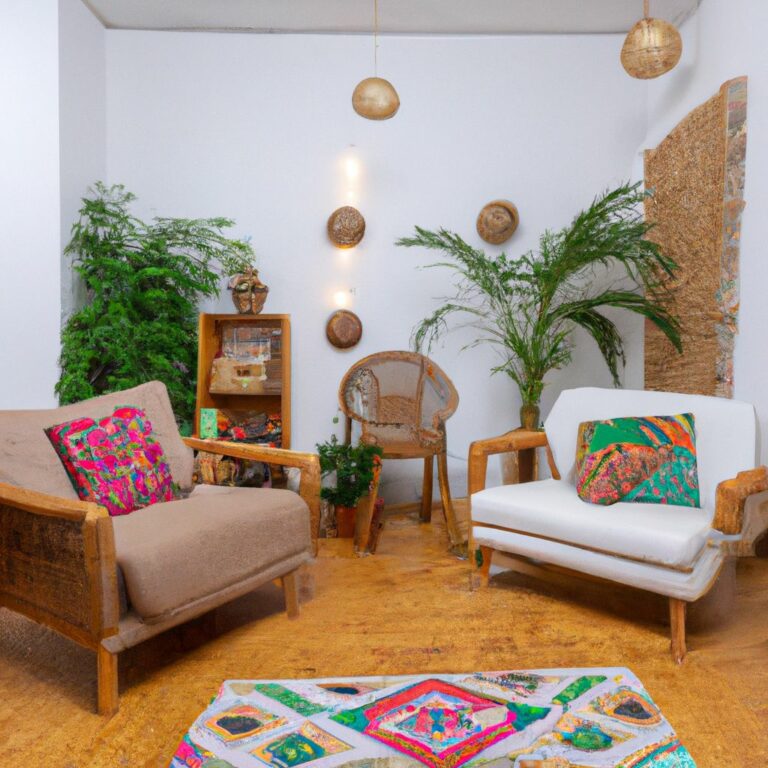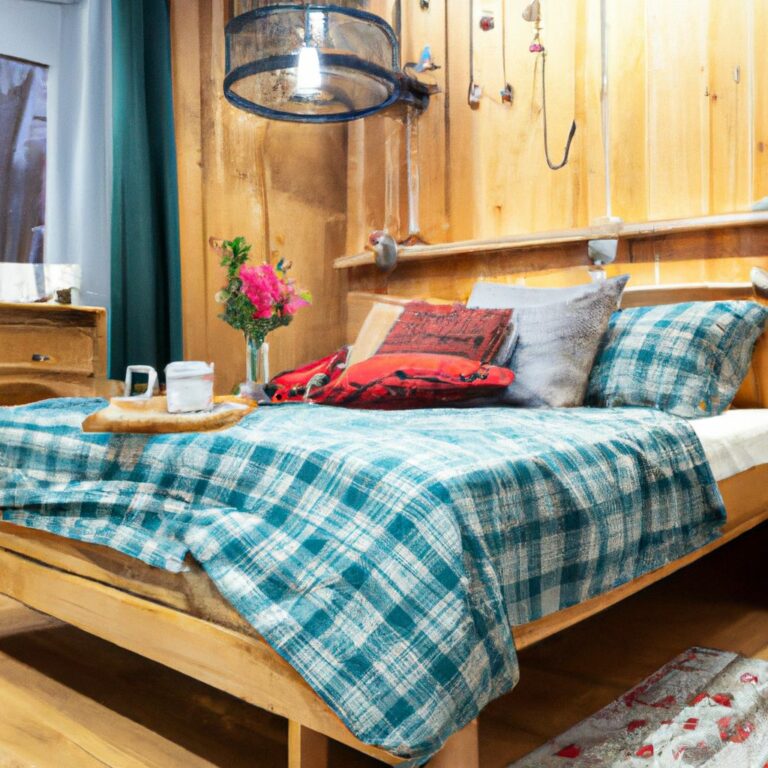Introduction to Minimalist Home Decor
Minimalist home decor is all about streamlining. Simplicity, functionality, and a clutter-free environment are key. Achieve this with clean lines, neutral colors, and minimal furniture. With fewer elements, peace and tranquility ensue.
Declutter! Get rid of items that don’t bring joy. Keep only the essentials. This creates space and clarity in your home.
Furniture should be multi-functional. Consider sofas with hidden storage or coffee tables that can be converted into workstations. These save space and add utility.
Incorporate natural materials, such as wood or bamboo. These bring warmth and texture, creating a cozy minimalist ambiance.
Lighting is important too. Soft, warm light creates a serene atmosphere. Use dimmers to control light intensity. Maximize natural light with unobstructed windows and light-colored curtains or blinds.
Finally, organize storage. Utilize built-in shelves, hidden cabinets, and Marie Kondo’s method to keep clutter out of sight and maintain the minimalist aesthetic.
Key Principles of Minimalist Design
Text: Minimalist Home Decor Principles
A minimalist design aims to simplify the living space by focusing on essential elements and eliminating unnecessary clutter. This design philosophy emphasizes the use of clean lines, neutral colors, and functional furniture. By creating a sense of simplicity and harmony, minimalist home decor creates a tranquil and uncluttered environment.
Key Principles of Minimalist Design
To achieve a minimalist design, there are several key principles that guide the process:
- Functionality: Functionality is crucial in minimalist design. Every item in the space should have a purpose and serve a specific function. This principle ensures that the design remains practical and efficient.
- Simplicity: Simplicity is at the core of minimalist design. It involves eliminating unnecessary embellishments, decorations, and excessive details. Clean lines, smooth surfaces, and minimal ornamentation are key elements of this principle.
- Limited color palette: Minimalist design often employs a limited color palette, focusing on neutral tones such as whites, grays, beiges, and blacks. This choice helps create a visually cohesive and serene atmosphere.
- De-cluttered spaces: Minimalist design promotes a clutter-free environment. It involves eliminating unnecessary items and keeping only essential belongings. Adequate storage solutions are essential to maintain a tidy and organized space.
- Balance and symmetry: Achieving balance and symmetry is vital in minimalist design. It helps create a sense of visual order and harmony within the space. Furniture placement and the arrangement of objects play a crucial role in achieving this balance.
- Natural light: Maximizing natural light is a key principle in minimalist design. Large windows and open floor plans are commonly employed to allow as much natural light as possible. This not only brightens the space but also creates a more inviting and energizing atmosphere.
- Minimalist furniture: Choosing furniture with clean lines and simple designs is essential in minimalist decor. Cluttered or ornate furniture should be avoided. Instead, opt for functional and minimalist pieces that blend seamlessly with the overall aesthetic.
Unique Details to Consider
Apart from the key principles mentioned above, there are additional unique details to consider in minimalist design. These include incorporating natural textures like wood and stone, incorporating indoor plants to add a touch of nature, and utilizing negative space to create a sense of openness and tranquility.
A True Fact about Minimalist Design
Research conducted by the American Psychological Association found that minimalist environments can reduce stress and enhance mental well-being. The study concluded that minimalism’s focus on simplicity and order promotes feelings of calmness and clarity in individuals.
Decluttering and simplifying your home is like giving it a makeover with an invisible magic wand, making it look effortlessly chic and confusing your guests into thinking you’ve hired a professional organizer.
Decluttering and Simplifying
Declutter and simplify! That’s the core of minimalist design. All unnecessary elements are taken away for a clean, organized look. This eliminates distractions and focuses on what’s important.
Simplicity and function go together in minimalist design. It’s user-friendly, making it easy to interact with the content. Each element has a purpose, and together they form the design.
To get that minimal look, designers use negative space, limited color palettes, and concise typography. Negative space gives important elements room to stand out. A limited palette creates harmony and prevents overload. Concise typography is clear without the extras.
Minimalism gives clarity, elegance, and focus. It allows users to fully engage without feeling overwhelmed. This approach works across many platforms, from websites to physical products.
Did you know minimalism comes from Japanese aesthetics? In the 1960s, inspired by Zen philosophy’s emphasis on simplicity and beauty, minimalism became an art movement. Its principles spread around the world.
Choosing the right color palette? It’s like finding your soulmate. Except soulmates don’t have an undo button.
Choosing the Right Color Palette
Choosing the ideal color scheme is a crucial aspect of achieving minimalist home decor. By carefully selecting the right colors, you can create a harmonious and calming environment that enhances the simplicity of your space. Here’s a breakdown of the various color palettes and their effects on different areas of the home:
| Monochromatic Palette | Analogous Palette | Complementary Palette |
| Consists of shades and tones of a single color. Provides a clean and cohesive look. | Uses colors that are adjacent to each other on the color wheel. Creates a sense of harmony and coordination. | Combines colors that are opposite each other on the color wheel. Creates a dynamic and vibrant atmosphere. |
It’s important to consider the function and mood of each room when selecting a color palette. For example, in the bedroom, opting for a soothing and calming monochromatic palette can promote relaxation and better sleep. In the living room, an analogous palette can create a warm and inviting ambiance for socializing with friends and family. Lastly, a complementary palette can be used in the kitchen or dining area to add energy and vibrancy for a lively atmosphere.
Now let’s explore the story of Rachel, a homeowner who successfully implemented the principles of minimalist home decor by choosing the right color palette. Rachel desired a peaceful and clutter-free living space, so she decided to embrace a monochromatic color scheme throughout her home. By selecting various shades of beige and cream, she achieved a sense of unity and tranquility. Rachel’s minimalist home not only looked visually stunning but also offered a serene and inviting environment for her and her family.
In summary, choosing the right color palette plays a significant role in achieving minimalist home decor. Whether you opt for a monochromatic, analogous, or complementary scheme, each color palette contributes to the overall mood and atmosphere of your space. By carefully considering the function and mood of individual rooms, you can create a harmonious and calming environment that truly reflects the essence of minimalist design.
Neutral colors are like the Switzerland of home décor – they keep everything calm and serene, while secretly judging your questionable taste in furniture.
Importance of Neutral Colors
Contrary to popular belief, minimalism isn’t just about getting rid of all your furniture. Rather, it’s about carefully selecting pieces that can make your living room look like a snazzy Scandinavian showroom. Neutral colors play an essential role in establishing a harmonious and balanced color palette. They function as a base that allows other shades to shine and increase the overall appeal of any design or area. Without neutrals, a color scheme can look chaotic or overwhelming.
The main reason why neutral colors are so important is that they can bring a sense of calmness and serenity. Shades such as white, beige, and gray have a soothing effect on our minds and establish an aura of elegance and sophistication. Whether used in interior design, graphic design, or fashion, these flexible tones effortlessly add balance to any composition.
Moreover, neutral colors can also act as an anchor for brighter hues. When integrated with bolder shades, they can help reduce their strength without diminishing their impact. The combination of neutrals and saturated colors produce a pleasing contrast that draws attention while preserving harmony. It permits viewers to appreciate each color in its entirety without causing an overwhelming experience.
To make use of neutral colors correctly, certain factors must be taken into account. One of them is to understand the undertones of different neutrals in order to achieve coherence in a color palette. For example, warm neutrals like ivory or beige go well with earthy tones, while cool neutrals like gray pair nicely with jewel tones or cooler hues.
Another suggestion would be to experiment with textures and materials when introducing neutral colors into design schemes. By adding various textures like linen, suede or brickwork, one can introduce visual interest and depth without relying solely on different tones of neutrals.
To conclude, neutral colors are not simply placeholders but agents for creating visually captivating compositions. Whether by forming balance amidst vibrant shades or inducing tranquility on their own, they have become indispensable components of color palettes across numerous creative fields. By acknowledging their worth and taking advantage of their potential artfully in creative endeavors, one can raise the visual impact of any design or space.
Furniture Selection for a Minimalist Look
Text: Furnishings for a Minimalistic Vibe
Simplicity is the key when it comes to choosing furniture for a minimalist aesthetic. Here are four essential aspects to consider:
- Functional pieces: Opt for furniture that serves a purpose and eliminates unnecessary clutter. Multi-functional items such as storage ottomans or coffee tables with built-in shelves can be a great choice.
- Clean lines and smooth surfaces: Choose furniture with sleek designs and minimal details. Smooth surfaces without ornate carvings or intricate patterns create a streamlined look that is characteristic of minimalism.
- Neutral color palette: Stick to neutral colors such as white, beige, or gray for furniture upholstery. These shades not only create a sense of calmness but also enhance the minimalist atmosphere.
- Space-consciousness: Select furniture that is proportionate to the available space. An oversized sofa or a large dining table can disrupt the minimalist ethos, so opt for smaller-scale options that provide functionality without overwhelming the room.
For a truly minimalist home decor, these furniture selection tips can help create an uncluttered and serene ambiance in your living space.
To ensure a minimalistic environment, pay attention to the finer details. Small accents like decorative objects or wall art should be purposeful and in line with the overall simple aesthetic. Each element should have a distinct role and contribute to the cohesive design.
Now, let’s talk about a crucial aspect that adds the finishing touch to a minimalist look – lighting. Proper lighting plays a vital role in accentuating the clean lines and minimalist features of the furniture. Consider using soft, natural light sources such as floor lamps or large windows to create an inviting yet understated ambiance.
Don’t miss out on the opportunity to transform your space into a minimalist haven. Embrace simplicity and embrace the sense of calm and tranquility it brings. Start applying these furniture selection tips today and create a home that is uncluttered, stylish, and truly minimalist.
Embrace the minimalism in your furniture layout because less is always more, and your IKEA assembly skills will thank you.
Optimal Furniture Layouts for Minimalism
Minimalism emphasizes simplicity and elegance. To set up your space for a minimalist look, furniture layouts are key. They can create an organized and clutter-free space. Let’s look at a table with data to help you visualize the different furniture setups.
Clean lines, neutral colors, simple designs, open spaces, multi-functional pieces, functional items, storage solutions, and compact furniture are all great for minimalism. Pay attention to unique details like these to create a sense of calmness and spaciousness.
The concept of minimalism dates back to the early 20th century when artists started embracing simplicity. Then, designers began implementing minimalist ideas in interior design during the mid-20th century. Now, it’s a popular trend for its refined and timeless appeal.
Natural light is a must for a minimalist space. Let it shine in and wow your neighbors!
Maximizing Natural Light in Your Space
Text: Natural Light Optimization for Your Space
Maximizing natural light in your space is key to creating a bright and inviting atmosphere. Here are three effective strategies to make the most of natural light:
- Embrace light-colored walls and furniture: Opt for light-colored paint or wallpaper to reflect sunlight and make your space feel larger and brighter. Additionally, choose furniture and accessories in light hues to enhance the overall luminosity.
- Utilize mirrors strategically: Placing mirrors opposite windows can help bounce natural light around the room, amplifying its effect. Consider using oversized or multiple mirrors to maximize the reflection and create a more radiant ambiance.
- Keep window treatments minimal: Avoid heavy curtains or blinds that can block natural light. Instead, opt for sheer curtains or blinds that allow light to filter through while still providing privacy. This way, you can enjoy the benefits of daylight without compromising on aesthetics or functionality.
To further enhance your space’s illumination, consider adding skylights or light tubes. These architectural elements can bring in additional natural light, especially in rooms with limited windows.
To illustrate the importance of natural light, let’s consider the experience of Sarah, a homeowner who implemented these strategies. Sarah transformed her dark and gloomy living room by repainting the walls in a light neutral tone and placing a large mirror opposite the window. The room instantly appeared more spacious and radiant, bringing a sense of vitality and freshness to the space. Sarah now spends more time in her living room, enjoying the uplifting atmosphere created by the optimized natural light.
By following these simple yet effective techniques, you can maximize natural light in your space and create a bright, welcoming environment that positively impacts your mood and well-being.
Unlock the secret to bringing the outdoors in with open windows and skylights—because who needs privacy when you can have natural light and nosy neighbors?
Importance of Open Windows and Skylights
Maximizing natural light is key to creating a welcoming, vibrant space. Windows and skylights are essential for this. They let in sunlight, which not only brightens the area but also offers numerous benefits.
Natural light has been linked to improved mood and productivity. It helps with our sleep patterns. Plus, it increases vitamin D production, which contributes to overall health and wellbeing. Additionally, natural light can make a room appear larger, giving a sense of openness and airiness.
To maximize the benefits, try these ideas:
- Position windows strategically. South-facing windows get the most direct sunlight. East-facing windows get morning sun and west-facing ones give afternoon warmth.
- Put mirrors or shiny objects near windows to help spread out the light.
- Choose sheer curtains or blinds that let light in while providing privacy. Avoid heavy drapes that block out too much sunlight.
- Regularly clean windows inside and out to remove dirt and smudges.
By applying these suggestions, you can make use of open windows and skylights to create a bright space that promotes positivity, productivity and a connection with nature. Who needs fancy accessories when the sunshine’s your décor?
Adding Minimalist Accessories and Decor
Adding Minimalist Accessories and Decor involves incorporating simple and elegant elements into your home decor. Here are some key points to consider:
- Choose furniture and accessories with clean lines and minimal embellishments to maintain a sleek and uncluttered look.
- Opt for a neutral color palette with a few pops of color to create a calming and minimalist ambiance.
- Invest in functional storage solutions to keep your space organized and free from clutter.
- Embrace natural materials such as wood and stone to add warmth and texture to your minimalist decor.
- Focus on quality over quantity by carefully selecting a few statement pieces that reflect your personal style.
Additionally, consider incorporating minimalist lighting fixtures, simple window treatments, and unobtrusive wall art to enhance the overall minimalist aesthetic of your space.
This approach to home decor has gained popularity in recent years due to its ability to create a peaceful and serene environment. By embracing simplicity and mindfulness in our living spaces, we can promote a sense of clarity and tranquility in our daily lives.
Want to add some greenery to your minimalist home? Just remember, plants are like pets without the maintenance – they’re silent, don’t eat your leftovers, and won’t judge you for binge-watching Netflix all day.
Incorporating Plants and Greenery
Want to add life to your space? Plants and greenery are the perfect touch! Not only do they bring nature indoors, but they also act as natural air purifiers. Incorporate this trend into your home or office for a fresher vibe.
Check out this table for different plant options and their features:
| Plant Name | Unique Feature |
|---|---|
| Peace Lily | Removes toxins |
| Snake Plant | Thrives in low light |
| Pothos | Trailing vines |
| Aloe Vera | Medicinal properties |
| Spider Plant | Easy to propagate |
Did you know that certain plants, such as lavender and jasmine, can promote relaxation and improve sleep quality? They release calming scents to help your mind and body relax.
A remarkable story showcases the power of plants. There was once an office with no natural elements, making it uninspiring. The employees felt drained and lacked motivation. But after some plants were added, the atmosphere changed! Productivity soared, creativity flourished, and the overall work environment became more enjoyable.
So don’t hesitate to spruce up your space! Whether you choose vibrant flowers or low-maintenance succulents, incorporating plants will elevate your interior design game. Plus, you won’t have to worry about hiding embarrassing clutter!
Minimalist Storage Solutions
Minimalist Storage Solutions involve creative ways to organize and store items while maintaining a clean and clutter-free living space. Here are 5 key points to achieve this:
- Utilize Hidden Storage: Opt for furniture pieces with built-in compartments or hidden storage space underneath, such as ottomans or beds with drawers. This clever use of hidden storage helps keep belongings out of sight and maintains a minimalist aesthetic.
- Vertical Storage Systems: Maximize your wall space by using vertical storage solutions like wall-mounted shelves or floating cabinets. By utilizing vertical space, you can effectively store items while keeping the floor area free and open.
- Declutter and Edit: Before implementing storage solutions, it’s important to declutter and edit your belongings. Get rid of items you no longer need or use, and only keep things that bring value or joy to your life. This will result in a more organized and streamlined living space.
- Multi-functional Furniture: Invest in furniture pieces that serve multiple purposes. For example, a coffee table with built-in storage or a sofa bed that can also act as a guest bed. By choosing multi-functional furniture, you can maximize storage while minimizing the number of items in your home.
- Minimalist Containers and Baskets: Use simple and sleek containers and baskets to store smaller items like accessories, office supplies, or toiletries. This not only keeps these items organized but also adds an aesthetic touch to the overall minimalist décor.
In addition to these key points, it’s worth noting that minimalist storage solutions emphasize the principle of “less is more.” By reducing the number of belongings and optimizing storage space, you create a serene and uncluttered environment that promotes a sense of calm and tranquility.
To successfully implement these strategies, it’s essential to consider each suggestion’s purpose and effectiveness. Hidden storage solutions, for example, work by providing discreet compartments that keep items hidden from view, maintaining a minimalist aesthetic. Vertical storage systems make use of empty wall space, effectively utilizing the vertical dimension of the room and freeing up floor area. Decluttering and editing belongings help create a streamlined and organized living space, eliminating unnecessary clutter and visual distractions. Multi-functional furniture serves the dual purpose of optimizing storage space while minimizing the number of separate furniture pieces needed. Finally, minimalist containers and baskets not only provide storage solutions but also add aesthetic value to the overall décor. By understanding why these suggestions work, you can successfully implement minimalist storage solutions in your home.
Who needs a storage unit when you can hide your clutter in plain sight and fool your guests into thinking you have your life together?
Utilizing Hidden Storage Spaces
Hidden storage spaces can make any living or working area look and work better. Incorporate these in clever ways – like built-in cabinets, under-bed drawers, or wall-mounted shelves – to get the most out of unused areas while keeping things tidy.
Multifunctional furniture with hidden compartments is another way to optimize storage. For example, a coffee table with drawers or a sofa with built-in storage offers space and functionality.
Transform everyday objects into dual-purpose pieces. Ottomans with removable lids that reveal a storage area provide seating and a place to hide items.
Remember to maintain organization and declutter. Sort through items and get rid of anything unnecessary. This will help ensure your hidden storage remains effective.
Creating a Tranquil and Calming Atmosphere
Creating a Peaceful and Serene Vibe
In order to cultivate a tranquil and calming atmosphere in your home, it is important to create a space that promotes relaxation and harmony. Incorporating minimalist home decor can play a significant role in achieving this goal. By decluttering your living area and focusing on clean lines and simple designs, you can create a peaceful environment that allows for both physical and mental relaxation. Additionally, choosing a color palette that consists of soothing tones such as soft neutrals and pastels can enhance the calming atmosphere of your home.
To further enhance the tranquil vibe, consider incorporating natural elements into your home decor. Bringing in plants and flowers not only adds a touch of beauty, but also promotes a sense of tranquility and connection to nature. You can also introduce natural materials such as wood and stone to create a grounding and earthy ambiance.
Another key aspect of creating a calming atmosphere is to ensure that your home is well-lit. Natural light can have a positive impact on mood and overall well-being. Maximize the amount of natural light in your home by keeping windows free of heavy curtains and using light-colored window treatments. Additionally, strategically placed mirrors can help reflect light and make your space feel brighter and more spacious.
Incorporating soft and comfortable textures into your decor can also contribute to a calming atmosphere. Opt for cozy blankets, plush rugs, and comfortable seating options that invite relaxation and provide a sense of comfort. Creating designated relaxation areas in your home, such as a reading nook or a meditation corner, can further enhance the calming ambiance and provide a space for quiet introspection.
Take the time to curate a space that aligns with your personal preferences and promotes a sense of tranquility. By intentionally selecting decor items that evoke a sense of calmness and minimizing distractions, you can create a serene environment that serves as a sanctuary from the stresses of daily life.
Don’t let the opportunity to transform your home into a peaceful retreat slip away. Embrace minimalist home decor and take the first step towards creating a tranquil atmosphere that will rejuvenate your mind, body, and soul. Your happiness and well-being deserve a space that fosters serenity and calm.
Swap out your synthetic furniture for natural materials and textures, because nothing says minimalist quite like a chair made of dirt.
Using Natural Materials and Textures
Natural materials and textures can bring tranquility and calm to spaces. Incorporate wood, stone and plants to create a grounding and connection to nature. Plus, they add warmth and visual appeal. Here’s an example: wood, stone, plants, bamboo flooring, marble countertops, potted succulents, exposed brick walls, granite tiles, and hanging ivy.
Make it unique with reclaimed wood, natural fabrics like linen and cotton, woven baskets, textured wallpapers and mix different patterns in textiles. Engage the senses too, with fragrances from essential oils or flowers, soothing nature sounds, and plenty of natural light.
Create a haven of peace by using natural materials and textures to transform living spaces. Minimalist art and wall decor can also add to the serenity – because sometimes less is more, except when it comes to the number of holes you need to patch in the wall!
Incorporating Minimalist Art and Wall Decor
Incorporating Minimalist Art and Wall Decor seamlessly enhances the aesthetic of a minimalist home. By strategically placing minimalistic art pieces and wall decorations, a space can achieve a sophisticated and clean look. Consider using neutral colors, simple designs, and geometric shapes to maintain the minimalist theme.
Below is a table displaying some examples of minimalist art and wall decor:
| Art Piece | Description | Price |
|---|---|---|
| Abstract Print | Geometric shapes | $50 |
| Framed Photograph | Minimalistic landscapes | $100 |
| Metal Sculpture | Clean lines and simple forms | $80 |
These unique details effortlessly complement the minimalist style by adding visual interest without overwhelming the space. By carefully selecting art pieces and wall decor that align with the design principles of minimalism, a harmonious balance can be achieved.
A little history: Incorporating minimalist art and wall decor has gained popularity in recent years due to its ability to create a calming atmosphere while still showcasing personal style and creativity. Minimalism originated in the mid-20th century as an art movement that aimed to simplify forms and eliminate unnecessary elements. This philosophy has since transcended the art world and become a popular design approach. Who needs mona Lisa when you can have ‘stick figure with questionable proportions’ as your minimalist art piece?
Simple and Clean Art Pieces
Simple and clean art pieces are the epitome of minimalistic decor. They bring elegance and sophistication to any space in a sleek and uncluttered way. But, why are they so special?
Firstly, they feature a limited color palette of neutral tones such as black, white, or gray. This allows for easy blending into any existing color scheme.
Secondly, they have a minimalist subject matter. Abstract geometric designs or single line drawings evoke emotions without overwhelming the viewer.
Thirdly, their use of negative space adds balance and harmony.
Furthermore, artistically curated frames can enhance the overall impact of the art piece. Sleek frames in materials like metal or natural wood will further accentuate its minimalistic charm.
A personal story shows how one minimalistic artwork – a black-and-white photograph of a single tree – can transform a living room. It creates an instant focal point and elevates the ambiance of the space.
Incorporating simple and clean art pieces into your home is a great way to create an environment that feels calm and serene. So, embrace the beauty of minimalism with carefully chosen artworks that speak volumes with their simplicity. And then, watch as your guests marvel at your stylish simplicity and wonder where all your clutter went.
Conclusion: Achieving a Minimalist and Stylish Home
Minimalist home decor is all about simplicity and elegance. To achieve this, declutter and only keep what’s essential. Choose a neutral color palette, like white, beige, or gray. Add pops of color using accent pillows or artwork. Incorporate storage solutions that blend with the room. Furniture should be sleek with clean lines and natural materials. Finally, use soft, diffused lighting to create a warm atmosphere. Don’t forget: less is more! Embrace simplicity and minimalism to turn your home into a stylish haven.
- Easy DIY home decoration projects - June 25, 2023
- Upcycled items for home decor - June 25, 2023
- Vintage home decor ideas - June 25, 2023
